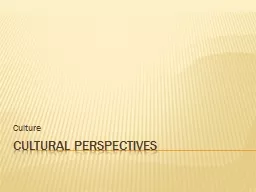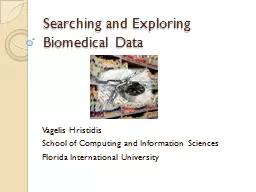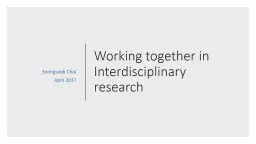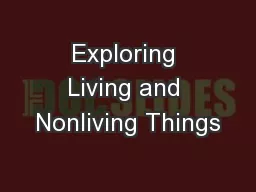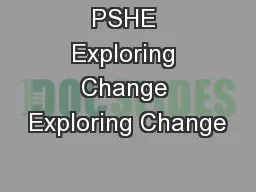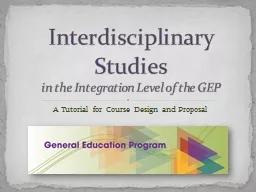PPT-Exploring interdisciplinary perspectives:
Author : stefany-barnette | Published Date : 2015-11-15
Social care and medical students views surrounding the covert administration of medicines Dr Martin Power martinppowernuigalwayie Background Objective Methodology
Presentation Embed Code
Download Presentation
Download Presentation The PPT/PDF document "Exploring interdisciplinary perspectives..." is the property of its rightful owner. Permission is granted to download and print the materials on this website for personal, non-commercial use only, and to display it on your personal computer provided you do not modify the materials and that you retain all copyright notices contained in the materials. By downloading content from our website, you accept the terms of this agreement.
Exploring interdisciplinary perspectives:: Transcript
Social care and medical students views surrounding the covert administration of medicines Dr Martin Power martinppowernuigalwayie Background Objective Methodology Discussion Results. MODULE C – . THE JUSTICE GAME. 2013. RELATED MATERIALS FOR REFLECTION/CONSIDERATION. For:. The Romans in Britain. Diana on the Dock: Does Privacy Matter?. The Trials of Oz. Conflicting Perspectives. Culture. Outcomes:. Investigate various theoretical perspectives and viewpoints that attempt to explain culture. (e.g., structural functionalism, conflict, symbolic interactionism, feminism and post-modern). Vagelis Hristidis. School of Computing and Information Sciences. Florida International University. Roadmap. Why is it challenging to search EMRs?. XOntoRank. : Leveraging Ontologies to improve sensitivity in EMR search. Three Perspectives of Paul’s Conversion. Conversion: . turning from something, with its consequences; connected with repentance (Matt. 18:3; Jms. 5:19,20; Acts 3:19).. PAUL ‘S CONVERSION. Seongsook Choi. April 2017. Interdisciplinary collaboration model. (. Amey. and Brown 2005). Problems, issues, challenges. Lessons learned. Interdisciplinary collaboration model. Transdisciplinary. . Curriculum Design. What is “Interdisciplinary Learning”?. Interdisciplinary Learning: . A . knowledge view and curriculum approach that consciously applies methodology and language from more than one discipline to examine a central theme, topic, issue, problem, or work.. LIVING THINGS . GROW. , . MOVE. , AND . REPRODUCE. . NONLIVING THINGS DO NOT.. Exploring Texture in . the Garden. ROCKS. LIVING OR NONLIVING?. Exploring Texture in the Garden. ROCKS. LIVING OR NONLIVING?. Exploring Coal - 1/23/17 - ©The NEED Project . Progression of Coal Formation. Increasing Time and Pressure. Peat. Lignite. Bituminous. Anthracite. Increasing Energy Content. Exploring Coal - 1/23/17 - ©The NEED Project . A map of your life. Drawing and sculpting change. Images of migration . into drama. The suggestions offered allow the students to probe more deeply the themes of the play. . Teachers . can select and adapt these ideas to meet the needs and interests of particular students. . John Callister & Marty Murtagh. NCIIA Conference . San Jose, California. March 21, 2014. Marty Murtagh. Material Sci.. Tobias Hanrath. Chemical Eng.. Rhett Weiss. Johnson School. John Callister. Mechanical Eng.. Transdisciplinary. . Curriculum Design. What is “Interdisciplinary Learning”?. Interdisciplinary Learning: . A . knowledge view and curriculum approach that consciously applies methodology and language from more than one discipline to examine a central theme, topic, issue, problem, or work.. Exploring Wind . - 10/19/17 . - ©The NEED Project . Global Wind Patterns. Exploring Wind - 10/19/17 - ©The NEED Project . History of Wind Energy. 5000 BC. Sailboats used on the Nile indicate the power of wind. A Tutorial for Course Design and Proposal Interdisciplinary Studies in the Integration Level of the GEP Introduction to Interdisciplinary Studies……….....................…... Slides 3-5 Defining Interdisciplinary Studies……………………………………..……......... 6-8 etwg. ?. Follow up to “Appreciative Inquiry Process”. Government/ministries : key challenging areas. To improve school retention rates. To upgrade the quality of teachers. Capacity building for education personnel at all levels.
Download Document
Here is the link to download the presentation.
"Exploring interdisciplinary perspectives:"The content belongs to its owner. You may download and print it for personal use, without modification, and keep all copyright notices. By downloading, you agree to these terms.
Related Documents


